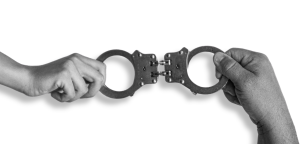Zero-tolerance or 100% bull****?
April 11, 2018
Having gained popularity in the 80s and 90s, zero-tolerance policies ensured that failure to follow certain school rules lead to heavy punishments, ranging from suspension to involvement of law enforcement. In theory, zero tolerance is supposed to protect the student population from violence like school shootings, but in the midst of constant explusions that have a recurring theme of racial disparity, there is a question that needs to be asked: do zero-tolerance policies actually have any value?
Most zero-tolerance policies require suspension or expulsion when students break rules such as bringing weapons, alcohol or drugs to school, fighting, insubordination and any threats or perceived threats. Many of these transgressions have the potential to be serious, but zero-tolerance policies force the punishment of students for fairly innocent infractions, like bringing toy swords or aspirin to school.
In addition, a study by the American Psychological Association found that though suspension rates had skyrocketed since the implementation of zero-tolerance policies, they have had little effect on school environment.
“There is no evidence, however, that zero tolerance has increased the consistency of school discipline,” said the American Psychological Association.
Meanwhile, students of color, particularly black and Hispanic students, are disproportionately targeted by these policies. According to a study by the U.S. Department of Education, 42.8 percent of the students suspended from school in 2007 were black. 21.9 percent were Hispanic. Only 15.6 percent were white. A 2002-2003 study also showed that Native American students had a much higher risk of being disciplined compared to white students. The federal government also found that students with disabilities were more than twice as likely to face suspension than those without.
In a Stanford study by psychologists Jennifer Eberhardt and Jason Okonofua, teachers were given anecdotes about student misbehavior and asked whether the students should be disciplined. All the anecdotes were the same, aside from one thing: some anecdotes gave the student’s names that suggested they were white, like Greg or Jake, and others gave them names that suggested they were black, like DeShawn or Darnell. They found that the students with stereotypically black names were more likely to be harshly disciplined by the teachers.
“[The teachers] were more likely to see the misbehavior as part of a pattern [when it came to black students], and to imagine themselves suspending that student in the future,” said a Stanford article about the study.
Suspension and expulsion from school detract time a student spends learning and can lead to a decreased chance of graduation and an increased chance of jail time, according to data from the National Longitudinal Survey. Zero-tolerance policies harm student learning more than they help student safety; after all, there are still fights, drugs and school shootings. Many states have already gotten rid of their zero-tolerance policies and replaced them with “restorative justice” policies, which are aimed toward working with the students toward change rather than just sending them home and hoping the suspension is a good enough wake-up call.
However, many states still have these policies, meaning that it is a good idea for students to stay informed about what their schools can punish them for doing and how they can fight back against the zero-tolerance policy. South Dakota does not appear to have any formal zero-tolerance policies, but that does not mean students should not speak out against zero-tolerance in other states. After all, many lawsuits spanning from the 80s to the 00s have been fought, lost and won.









